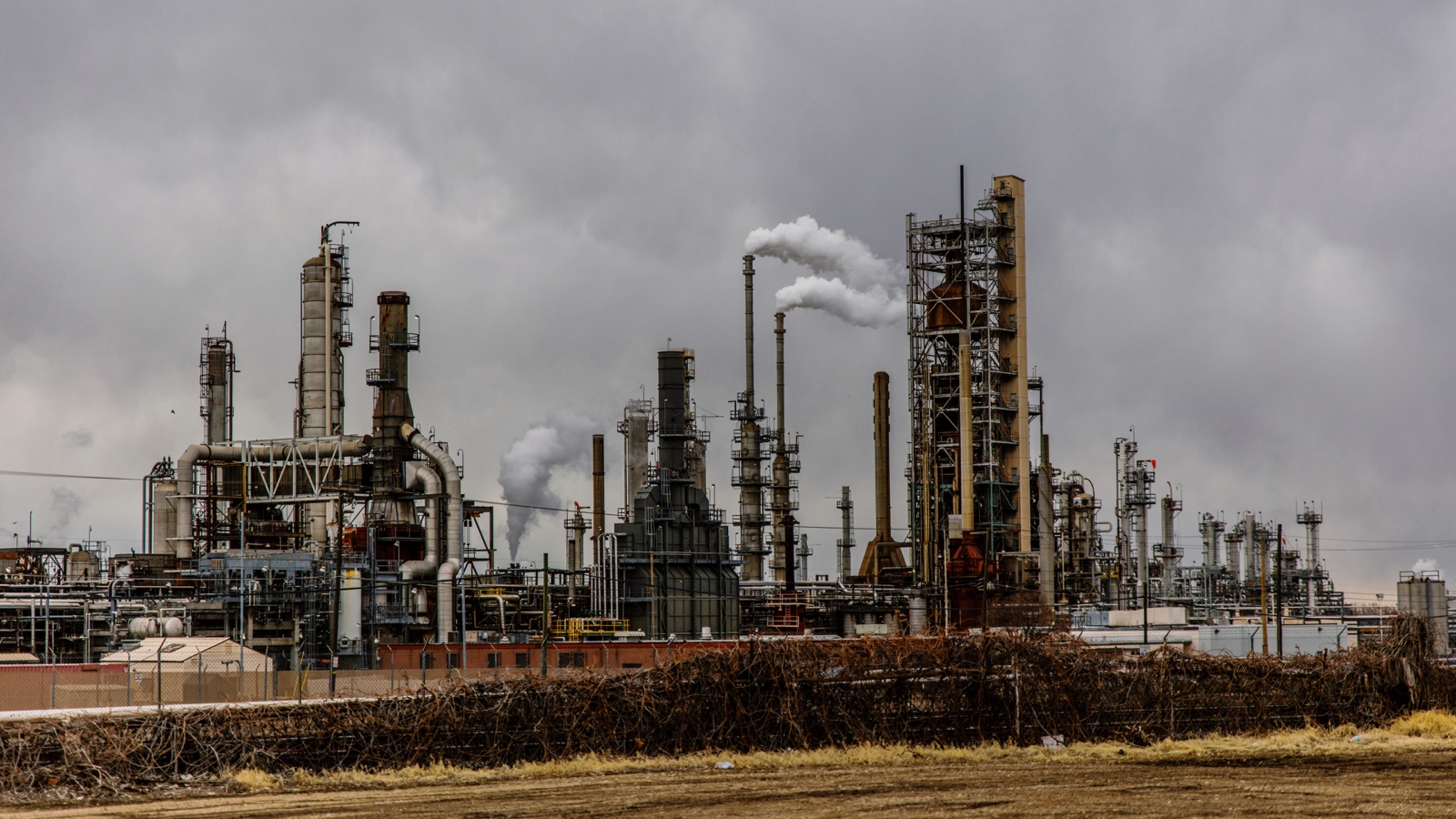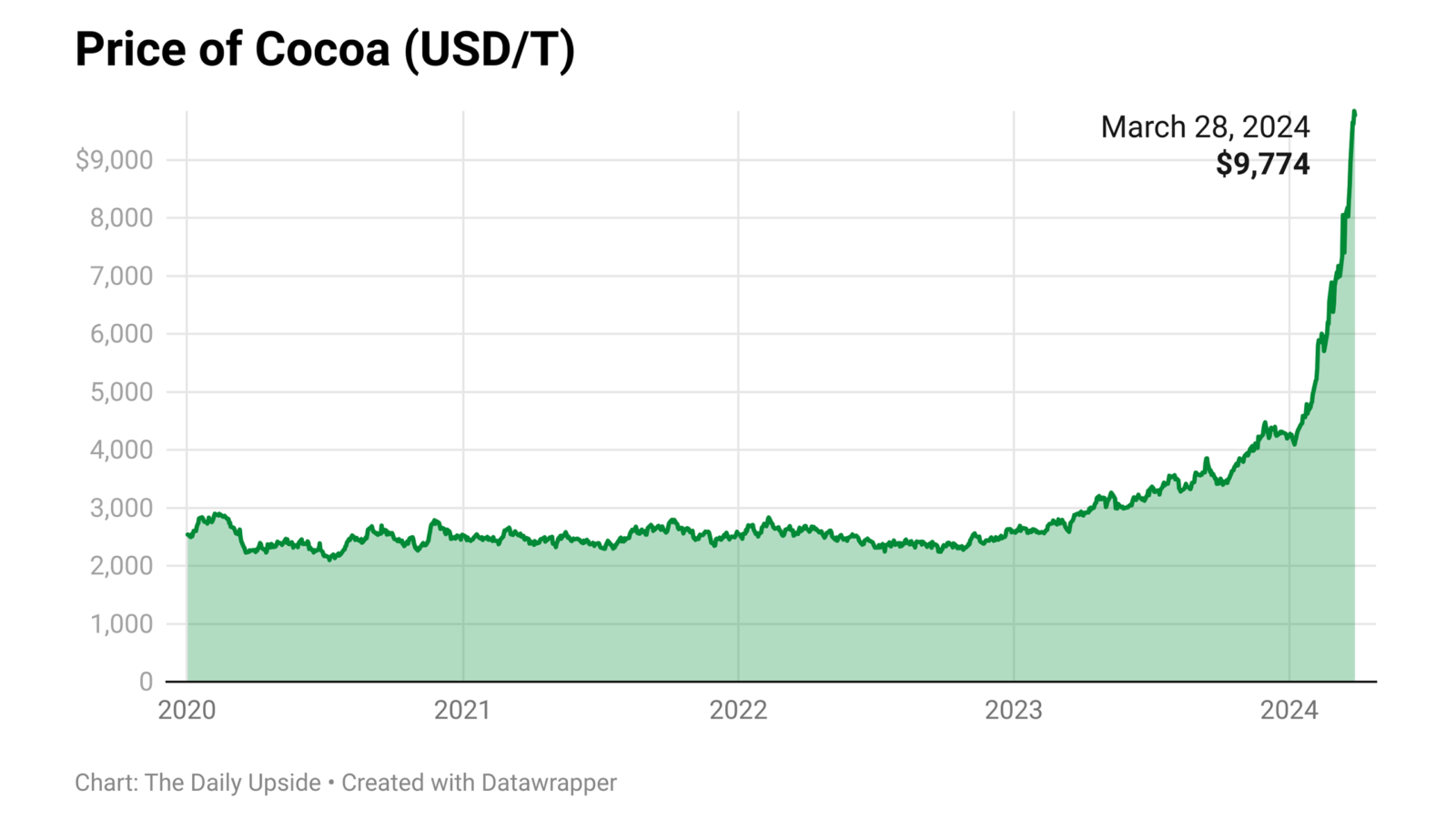Good morning and happy Friday.
Universal isn’t declaring war on streaming after all. On Thursday the music giant said it’s expanding its partnership with Spotify, the world’s largest music streamer. This wouldn’t be particularly big news if it weren’t for the fact that Universal is locked in a battle of wills with TikTok over streaming rights and has pulled all its artists’ music off the platform. Universal’s chumminess with Spotify signals that it’s still trying to work within the confines of the streaming industry and not break the whole thing, even though the slowing streaming business has led to deep job cuts at Universal. In the words of one of its biggest stars, “It’s me, hi, I’m the problem, it’s me.”
Fossil Fuel Clinginess Puts Climate Change Threshold in Peril

For all the hoopla around electric vehicles, solar panels, and wind farms, there’s still a whole lotta drilling going on.
Oil and gas entities are on track to nearly quadruple the fossil fuels they extract from newly approved projects by the end of the decade, the non-governmental organization Global Energy Monitor reported.
Dig for Fire
If humans want to reach net-zero carbon emissions by 2050 and avoid torching the planet, new oil or gas investments won’t help, according to the GEM.
Data compiled in the GEM’s Global Oil and Gas Extraction Tracker shows that at least 20 fields reached a final investment decision in 2023, which sanctioned the extraction of 8 billion barrels of oil equivalent (boe). But by the end of this decade, that could climb to about 31 billion boe across 64 additional fields. Not only do the top fossil-fuel-producing countries plan to bolster their extraction efforts even further, but oil and gas fields are being discovered and tapped in places that previously didn’t do much drilling:
- The US produces 17.7 million barrels of oil per day — that’s more than South and Central America, Europe, and Asia Pacific combined, GEM reported. The US Energy Information Administration expects oil production to increase to record high levels of between 19 million and 21 million barrels per day from 2024 to 2050. Gas production is also expected to continually increase, hitting 1,200 billion cubic meters by 2050.
- Of the 22 countries that discovered new gas and oil fields in 2022 and 2023, four — Cyprus, Guyana, Namibia, and Zimbabwe — accounted for 37% of total discovered volumes despite being historically small players in the drilling business.
Oil Forecast: There are plenty of reasons oil prices should be surging — the Israel-Hamas War, the Russia-Ukraine War, Yemeni militants attacking ships in the Red Sea, and OPEC+ production cuts. But throughout last year, prices remained relatively firm, bouncing between $75 and $85 a barrel. The International Energy Agency recently reported that in 2024 oil consumption is expected to increase at just half the rate seen last year, which will be easily matched by swelling production in the US, Canada, and Brazil.
Invest in the Startup That’s Bringing Nature to Your Front Door
Whether you live in a concrete jungle or a cabin in the woods, it is proven that exposure to a green space is good for your health and well-being. Which is exactly why Lively Root has built a technology platform to make creating your very own green space more convenient.
Lively Root simplifies the online plant shopping process, allowing customers to place an order from a diverse selection of farm-fresh plants and have them delivered right to their doorstep (think DoorDash, for plants).
Since its founding, Lively Root has generated $12.2 million in gross revenue and supplies plants for over 500,000 customers, including B2B platforms like Apple, Airbnb, Oracle, and more. Their efforts to reshape our connection with nature are gaining traction, and fast, with an expected 113% revenue CAGR from 2020 to 2025E.
Join Lively Root in reshaping the future of plant shopping, invest today.
Advertisement Market is Booming, But Not for Everyone
Mad Men cocktail hours are getting longer.
On Thursday, media investment company Magna said it’s revising its projection for the advertising industry through the rest of the year to a slightly rosier outlook than before. But this being media and all, not every subsector is raising a glass.
Sign of the Times
Magna, a subsidiary of ad industry giant Interpublic Group, now expects ad sales by media owners to increase more than 9% this year, to a whopping $369 billion, or up about a percentage point from its previous forecast. The group pegs its optimism on two major factors: macroeconomic tailwinds and the return of so-called cyclical events, such as the Summer Olympics and the 2024 election cycle. The election, in particular, “will generate $9 billion of additional ad revenue for media owners (+13 percent versus the 2020 cycle),” Magna wrote in its report. We’re glad at least somebody is looking forward to this campaign season.
Still, not every media player will share that growth equally — and the presence of high-impact, every-four-year events can offset the slow death spiral of traditional media only so much:
- Ad revenue for “premium long-form streaming” — which includes everything from ads on Netflix and Hulu, those displayed on connected TVs like Roku, and free ad-supported TV streamers like Tubi — is expected to jump nearly 13% to finally cross a $10 billion milestone, proof that the streaming industry’s ad-tier gamble may be paying off.
- Linear TV ad revenue, meanwhile, continues to shrivel, with Magna projecting a nearly 9% decline to $34 billion in 2024; annual linear TV ad revenue in the US was as high as $80 billion as recently as 2015. Social media ad revenue will cross $80 billion this year, up 14%, Magna projects.
A-IOU: Disruption of the news publishing business continues apace, too. In May, Google rolled out a beta version of AI-powered search engine Search Generative Experience. And its impact is becoming clear. In a report earlier this month, Adweek found that the AI search engine has disrupted as much as 60% of organic search traffic for online outlets, losses that could amount to as much as $2 billion per year for the long-suffering industry. Ouch.
Low Cocoa Crop Yields Have Sent Chocolate Prices Soaring
The chocolate Easter Bunny is the new caviar.
The price of cocoa beans, the key ingredient in chocolate, has soared this year due to ailing crops in Ivory Coast and Ghana. Consumers were already feeling a chocolatey pinch around Valentine’s Day, but cocoa futures hit a record high this week of more than $10,000 per metric ton. Not a great start to the Easter weekend — but don’t worry, chocolate makers have a plan.
Come With Me and You’ll See A World of Pure Shrinkflation
Despite cocoa’s torrid rise, analysts don’t seem hopeful that we’ve hit the chocolatey peak. Pascal Boll, analyst at Stifel, told The Wall Street Journal that it would be “risky” to assume the price of cocoa will start to come down soon. “The direction is clearly upwards,” Boll said. Of course, the first port of call for chocolatiers is to raise prices — and they’ve done that. Chocolate prices rose 11.6% over 2023, far outstripping the Consumer Price Index’s overall inflation figure of 3.4% for the year.

Last year also saw some major chocolate manufacturers like Mars quietly shrink the size of their products to lessen the financial burden of procuring cocoa beans. Now some chocolate makers are even trying to cut chocolate out of the equation entirely:
- CNN reported that Hershey has responded to the price increases by marketing Easter products that rely more heavily on other sugary ingredients like caramel or gummy.
- Bloomberg reported last month that this trend was already in evidence at the Super Bowl, with Mars and Hershey buying ad spots for peanut butter M&M’s and caramel Reese’s Pieces, respectively.
Chocolate Tears: For Big Chocolate, offsetting costs is an achievable if uncomfortable goal, but for boutique or independent chocolatiers, the situation is more dire. Christopher Taylor, co-owner of Li-Lac Chocolates, told CNN that to break even the business would have to hike prices by 30%, but an increase like that could deter even the most ardent chocoholics.
Interested in Trading Stocks? Don’t go at it alone. As the leader in investing research and education for 40 years, Investor’s Business Daily has helped countless retail investors make informed trading decisions. IBD Digital gives you all the tools and analysis you need to invest with an edge, and Daily Upside readers are eligible for a special discount: only $1/week for the first 8 weeks (you save over $60).
Extra Upside
- Teacher’s Pest: Four Canadian school boards are suing Meta, Snap, and TikTok.
- Crypto King in exile: Sam Bankman-Fried gets sentenced to 25 years in prison.
- Are You Drinking The Right Wines? If your wines aren’t chosen for you specifically based on your palette, you are likely overpaying for your wine. Take the Bright Cellars quiz, designed by two MIT grads, and get custom-curated wine boxes delivered every month.*
* Partner

